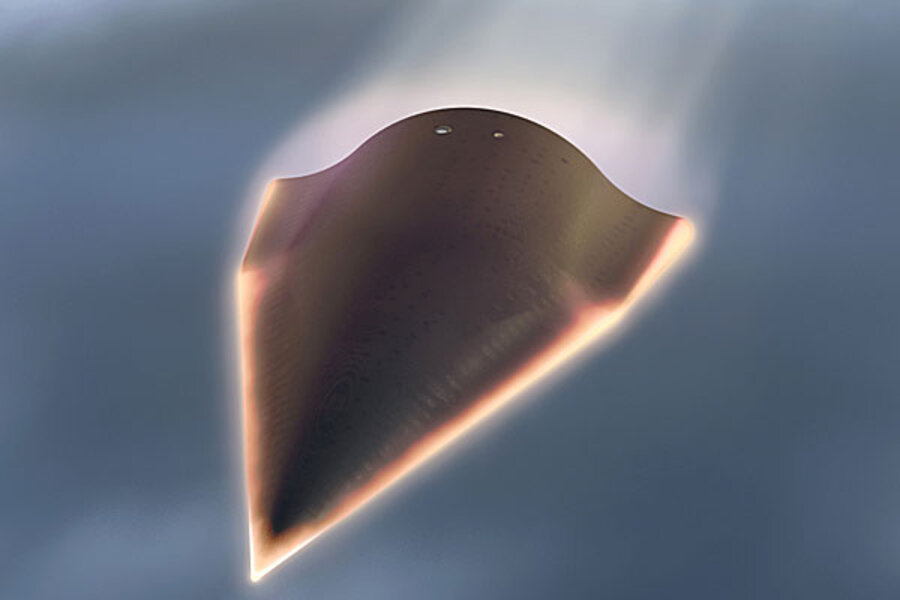DARPA hypersonic glider skin peeled off, says Pentagon
| Los Angeles
An unmanned hypersonic glider likely aborted its 13,000 mph (20,920 kph) flight over the Pacific Ocean last summer because unexpectedly large sections of its skin peeled off, the U.S. Defense Advanced Research Projects Agency said Friday.
The Hypersonic Technology Vehicle-2, launched from Vandenberg Air Force Base, California, atop a rocket and released on Aug. 11, 2011, was part of research aimed at developing super-fast global strike capability for the Department of Defense.
The vehicle demonstrated stable aerodynamically controlled flight at speeds up to 20 times the speed of sound, or Mach 20, for three minutes before a series of upsets caused its autonomous flight safety system to bring it down in the ocean, DARPA said in a statement.
A gradual wearing away of the vehicle's skin was expected because of extremely high temperatures, but an independent engineering review board concluded that the most probable cause was "unexpected aeroshell degradation, creating multiple upsets of increasing severity that ultimately activated the Flight Safety System," the statement said.
Initial shockwaves created by the gaps in the skin were more than 100 times what the vehicle was designed to withstand, but it was still able to recover and return to controlled flight, said Kaigham J. Gabriel, DARPA's acting director.
Eventually the upsets grew beyond its ability to recover.
The 2011 flight was the second time an HTV-2 was launched. The first flight, in April 2010, also ended prematurely.
Data from that flight was used to correct aerodynamic design models for the second test, resulting in controlled flight, and now data from the latest flight will be used to adjust assumptions about thermal modeling, Air Force Maj. Chris Schulz, the DARPA program manager, said in the statement.
"The result of these findings is a profound advancement in understanding the areas we need to focus on to advance aerothermal structures for future hypersonic vehicles. Only actual flight data could have revealed this to us," he said.
Most specific details of the program are secret. DARPA has released artist renderings showing a craft that looks something like the tip of a spear. After the 2011 flight the agency released handheld video, taken aboard a monitoring ship, that showed a dot streaking across the sky.
The HTV-2 would have splashed down in the ocean regardless of the anomaly. The vehicles are intended to be used once and are not recovered.





